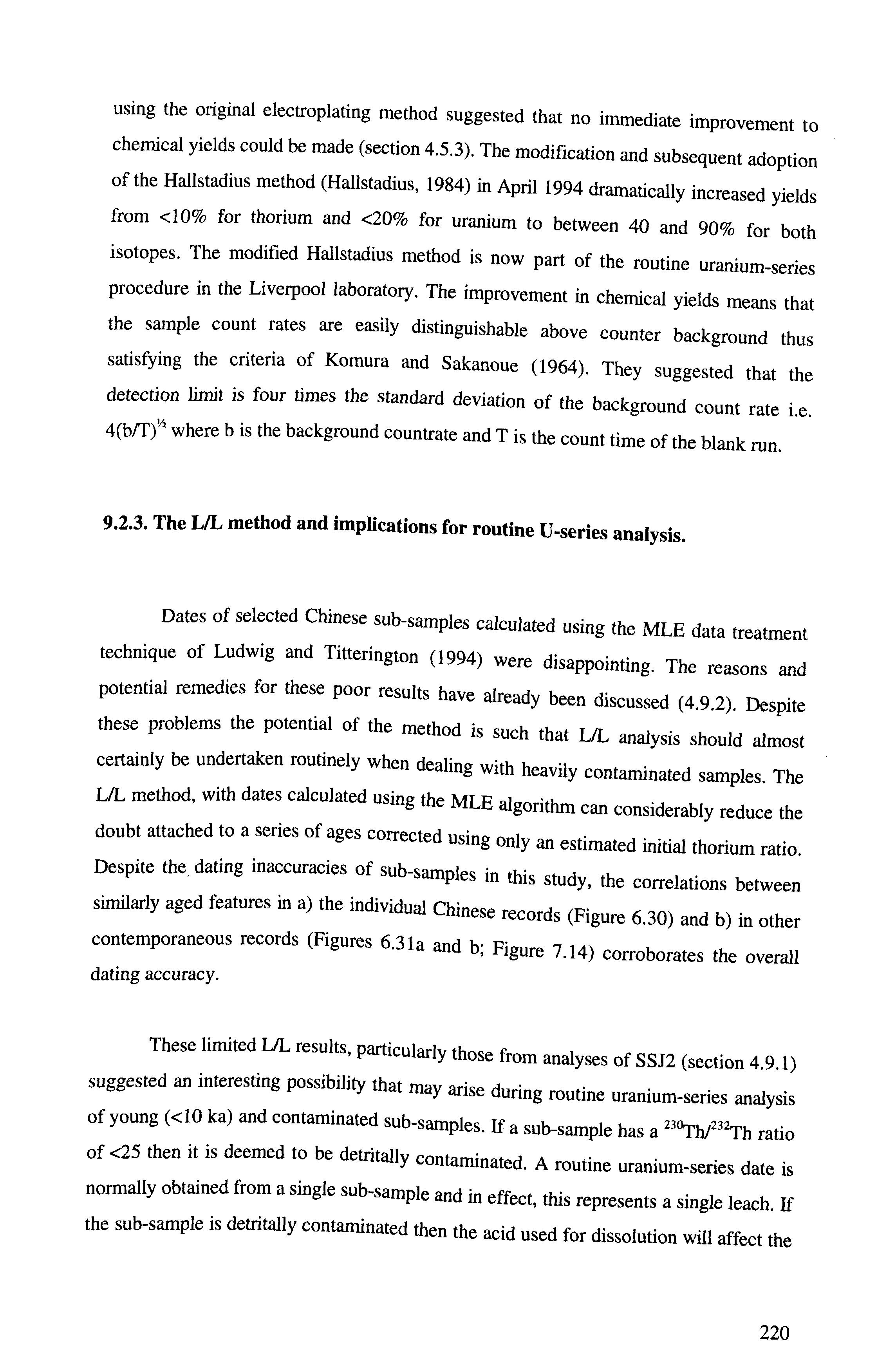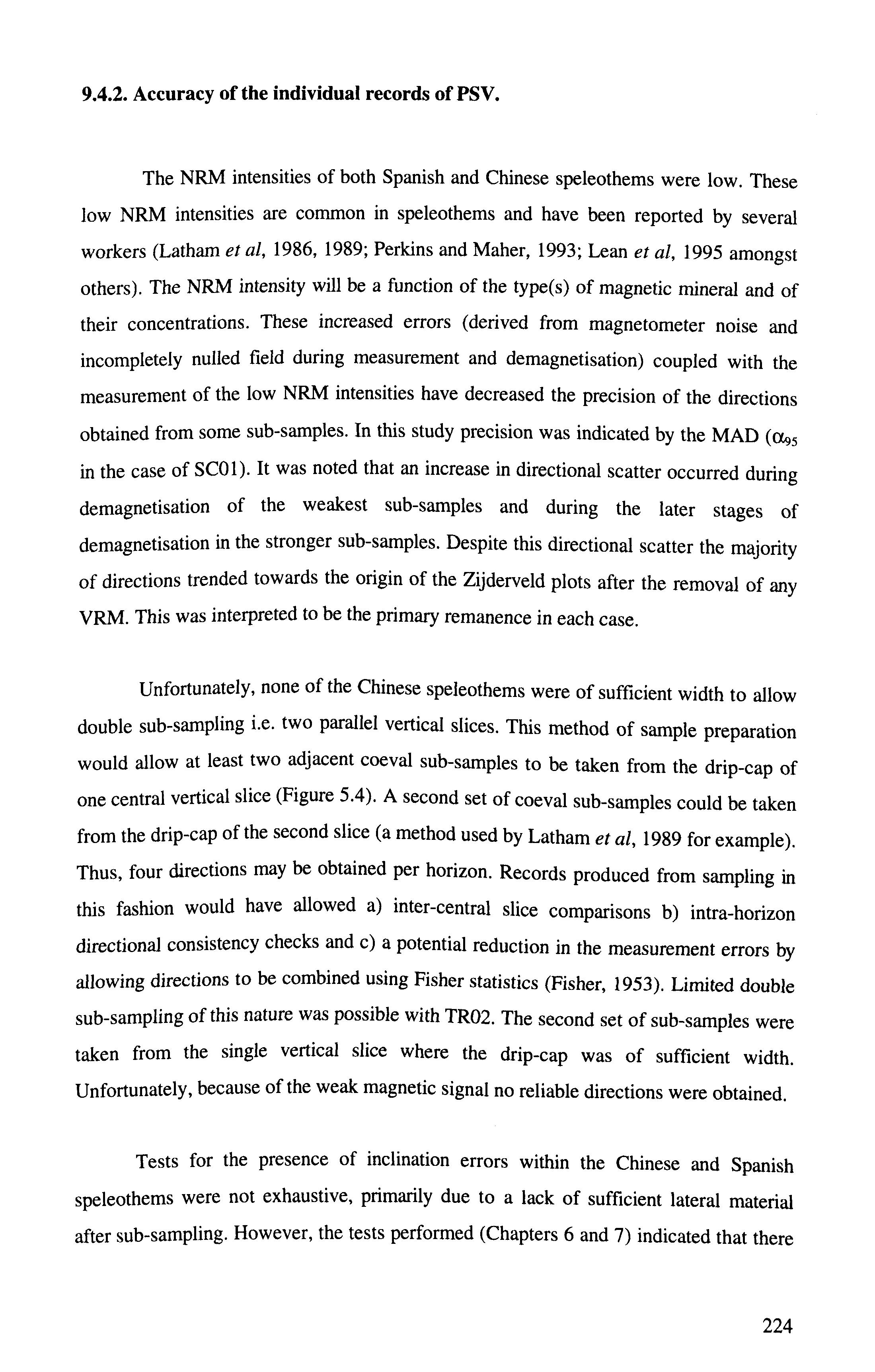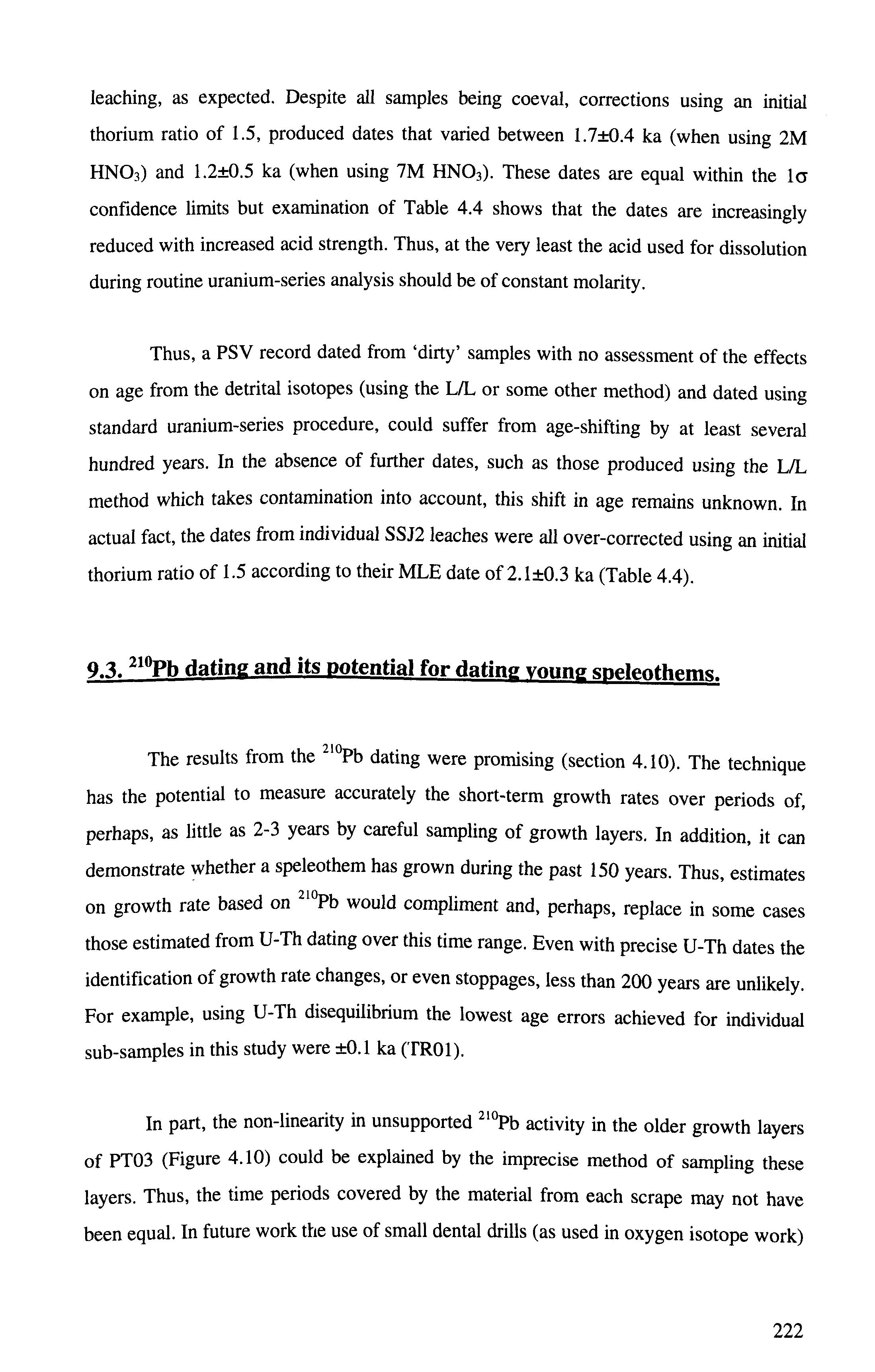
1 minute read
9.2.2. Electroplating
The results in Figure 9.1 were derived from back-calculation of a standard uranium-series analysis to simulate the percent age errors associated with differing chemical yields. These samples had no measured detrital thorium contribution and had
uranium concentrations of >0.5 ppm. Thus, the influence of chemical yield alone could be assessed. In each case, the simulated yields of uranium and thorium have been
Advertisement
maintained at the same level for each calculation and thus, the isotope ratios remain unaltered. It is possible to see that yield increases above 30% decrease the age errors by only a few percent. For example, the differences in percent age errors between chemical
yields of 35 and 80% for SSJ3 32B and SRI 26B are 1.3 and 0.7% respectively. The
difference in age errors between chemical yields of 5 and 35% are 6 and 10%
respectively; a change that could become significant in young samples. Huts, in this study
the initial increases in dating accuracy achieved by changing from the initial
electroplating method to the Hallstadius method (sections 4.5.3 and 4.5.4) were probably
significant. However, as yields were generally maintained above 35% using the
Hallstadius method any effect on the accuracy of a sub-sample date from yields alone was likely to be negligible.
The accepted lower working detection limit for alpha-spectrometry is 5 ka (Schwarez, 1980). Below this age the ability ,0 resolve the lower counts of isotopes over background diminishes. This is esneriaiiv t especially the case when dealing with samples of low uranium concentration as found in the rhinoe» ithe Chinese speleothems and in AG02 and AG03 from Matienzo. However, this problem has heen • v nas been greatly improved in the Liverpool U-series laboratory by the use of low backamnnH u- u Background, toSh resolution ‘PIPS’ detectors. These detectors can resolve the 228Th and 224r a hod , ,grounds (section 4.7.1) and allow separate corrections to be made to the corresnrmH,r.~ corresponding uranium and thorium spectra. Thus, reliable dates can be produced in samples Ptes <5 t-a .u- • <5 ka and this is particularly the case for samples with high uranium concentrations such as TR01 and TR02
9.2.2. Electroplating.
A comparison between two electroplating procedures illustrated the major source of yield loss during chemical separation of uranium and thorium (section 4.5). Tests








